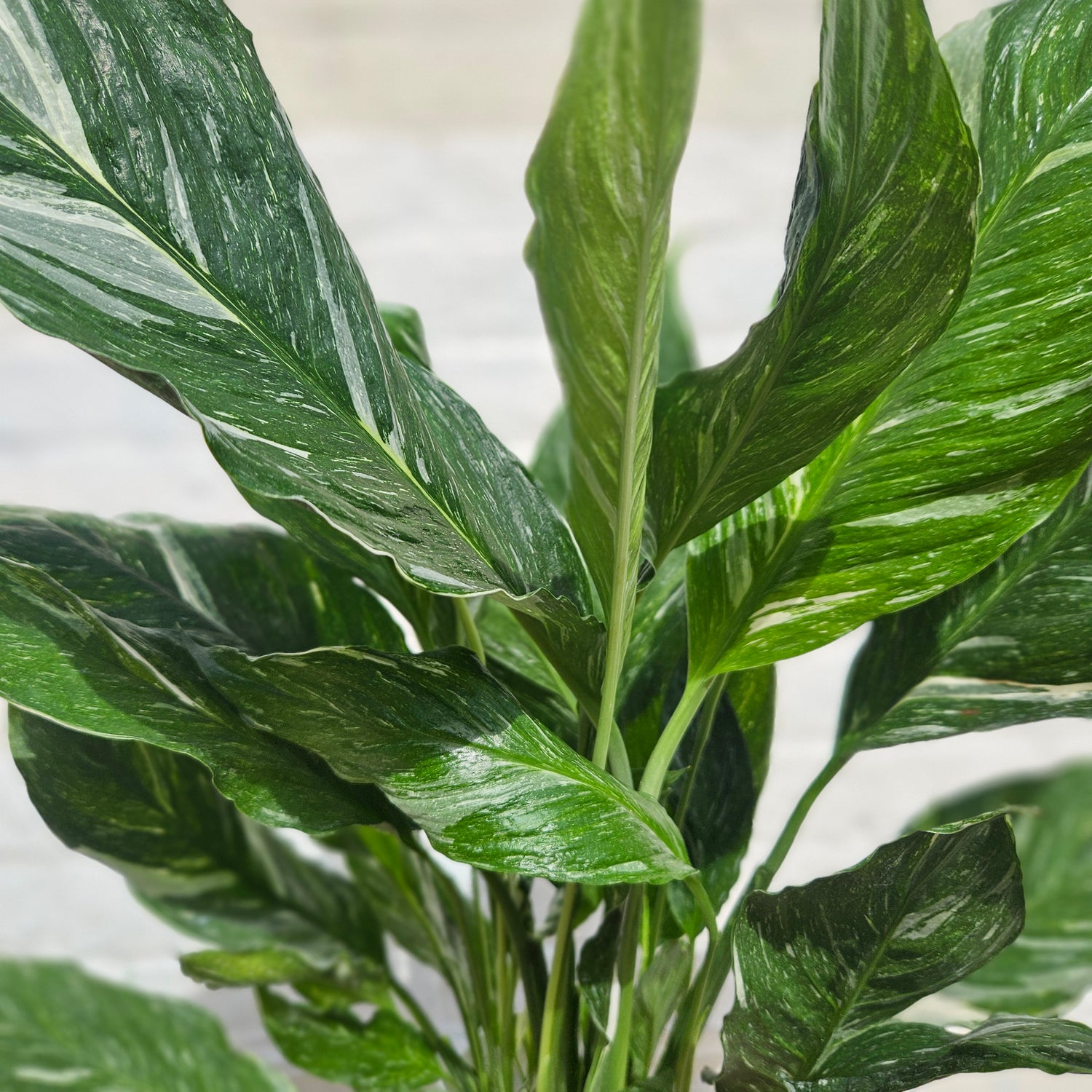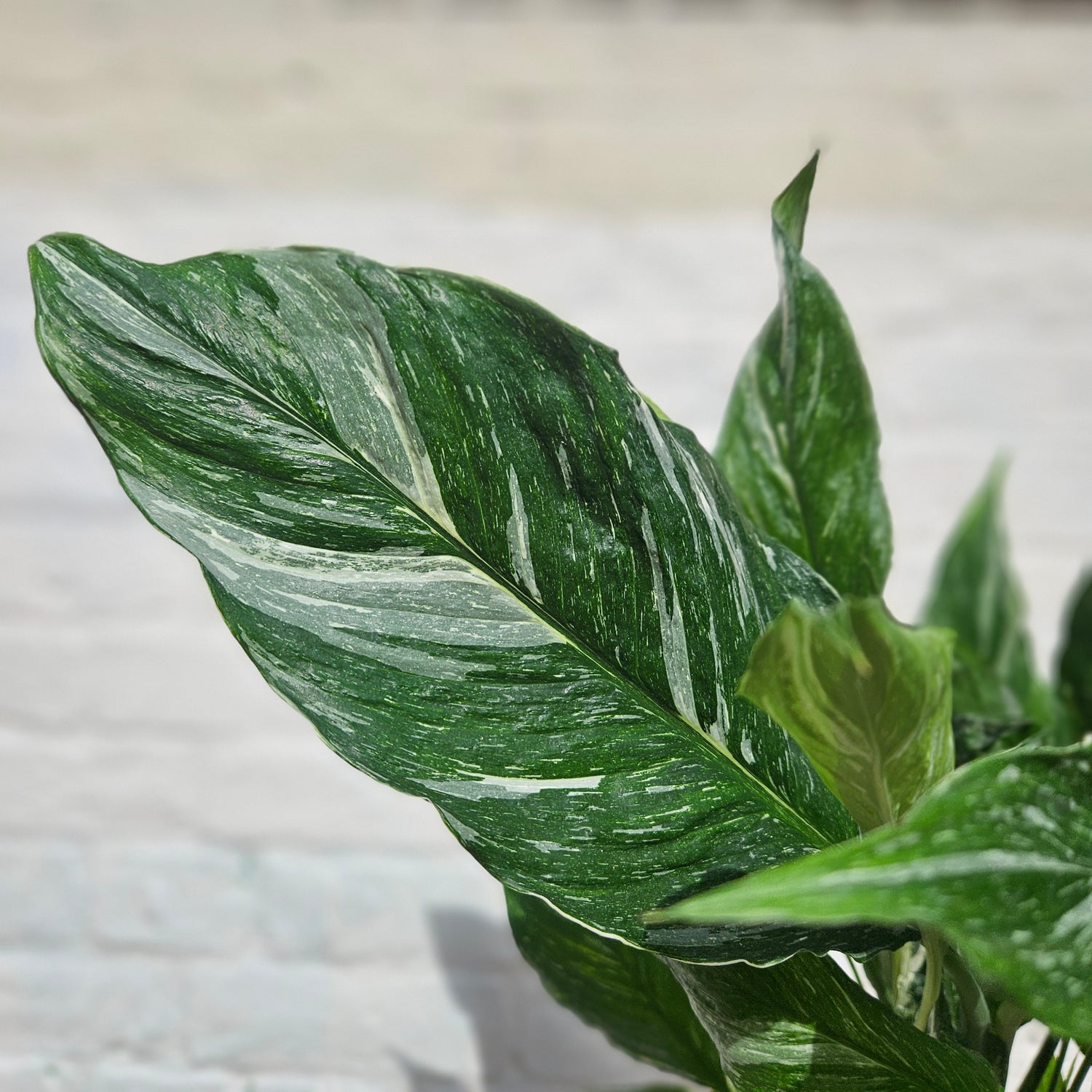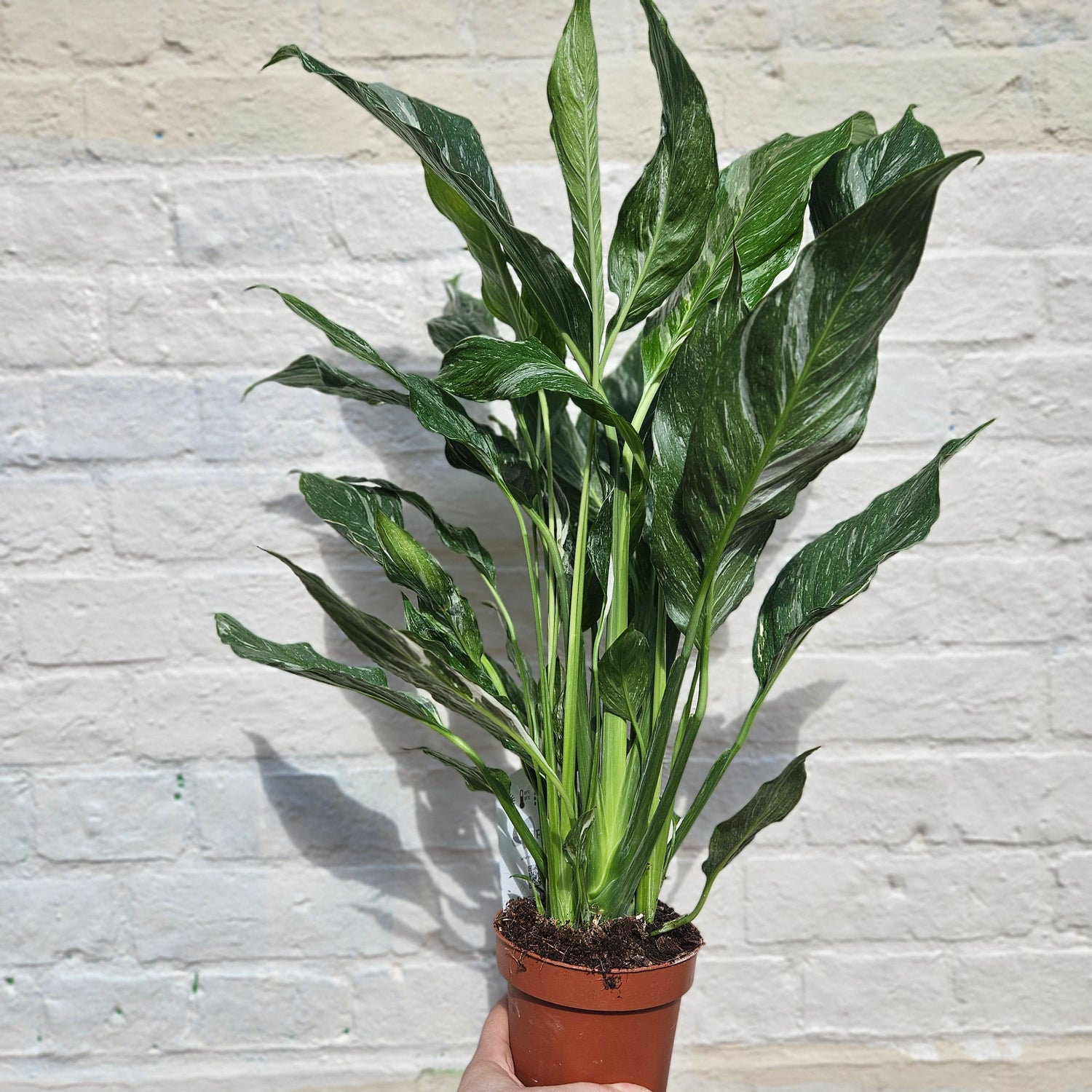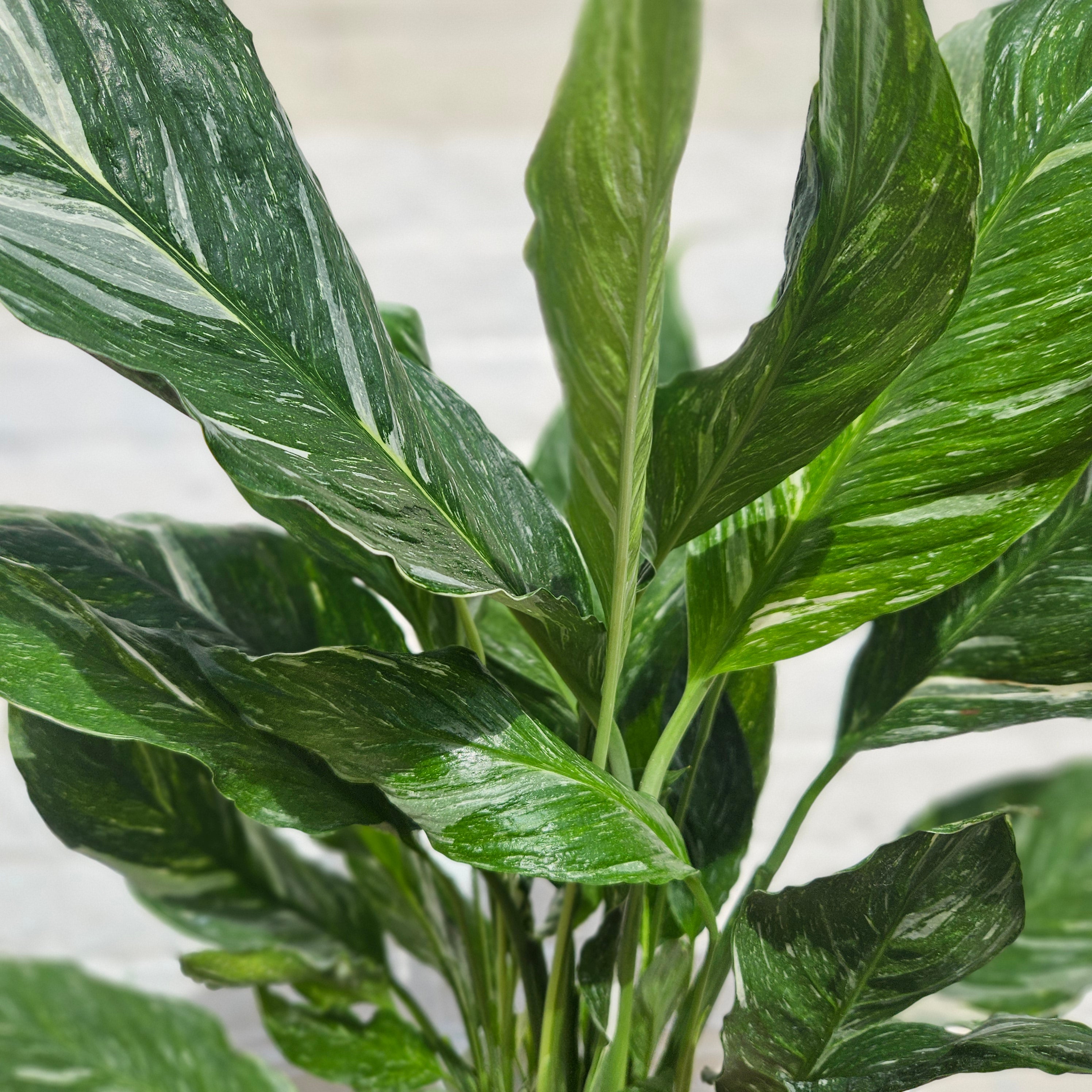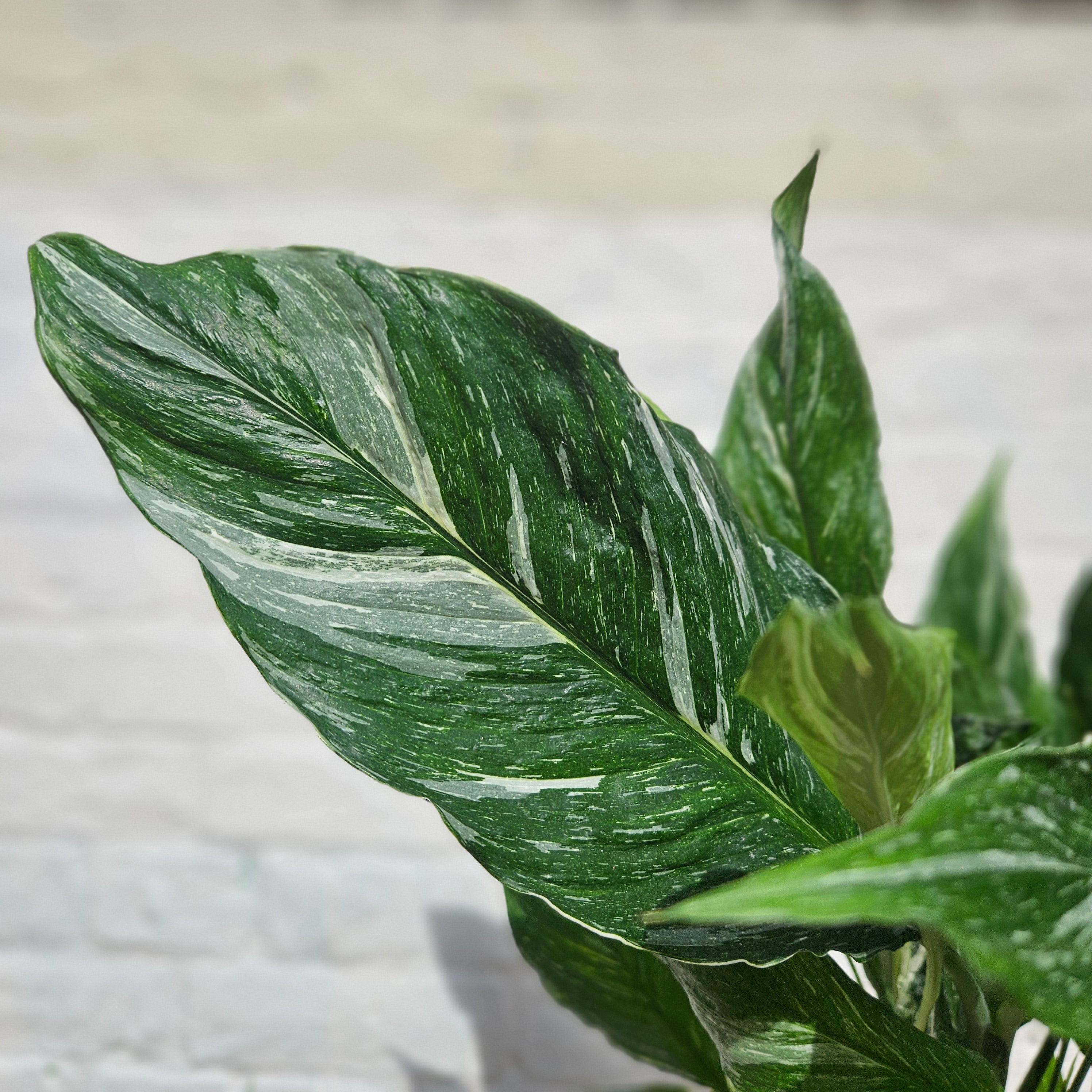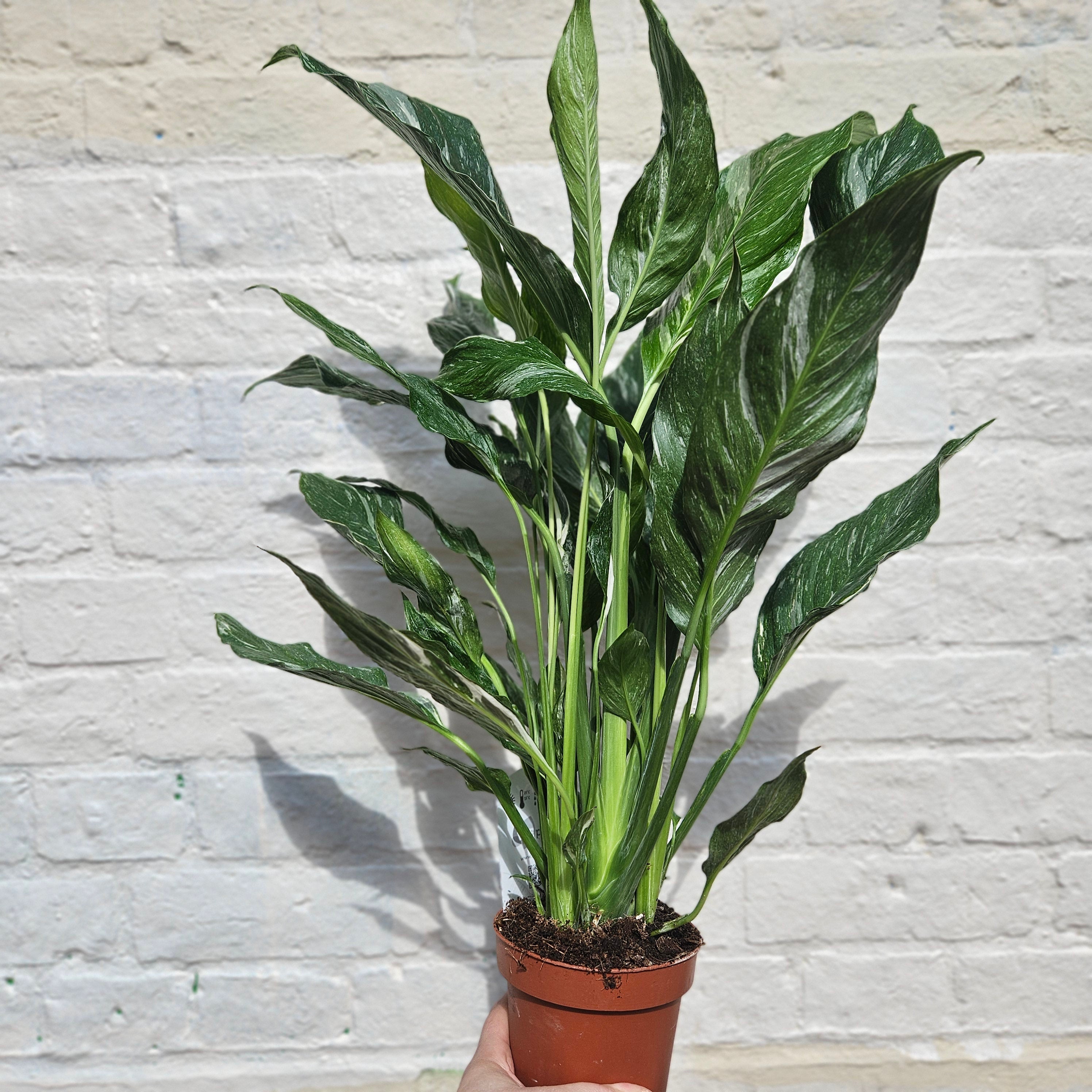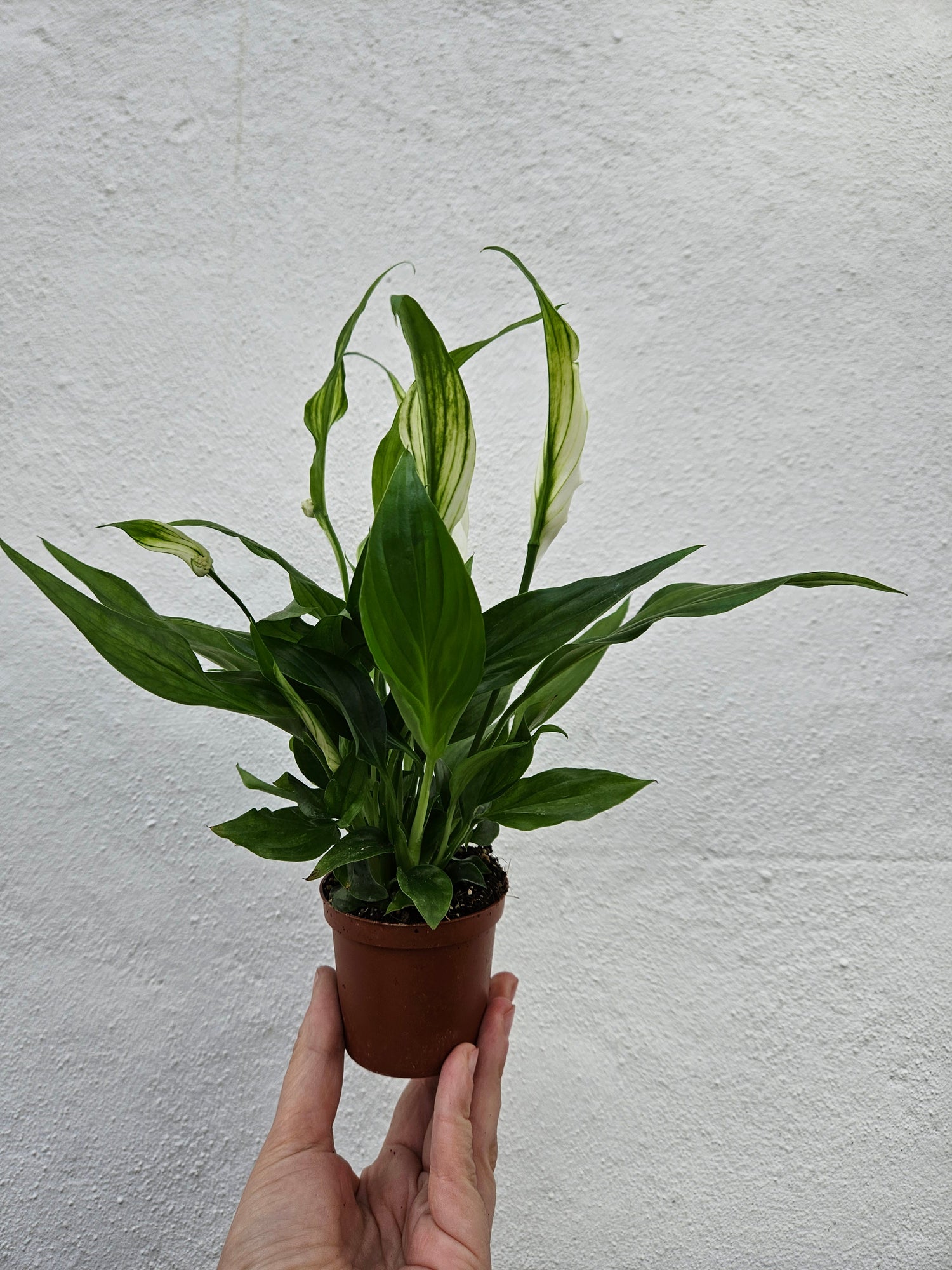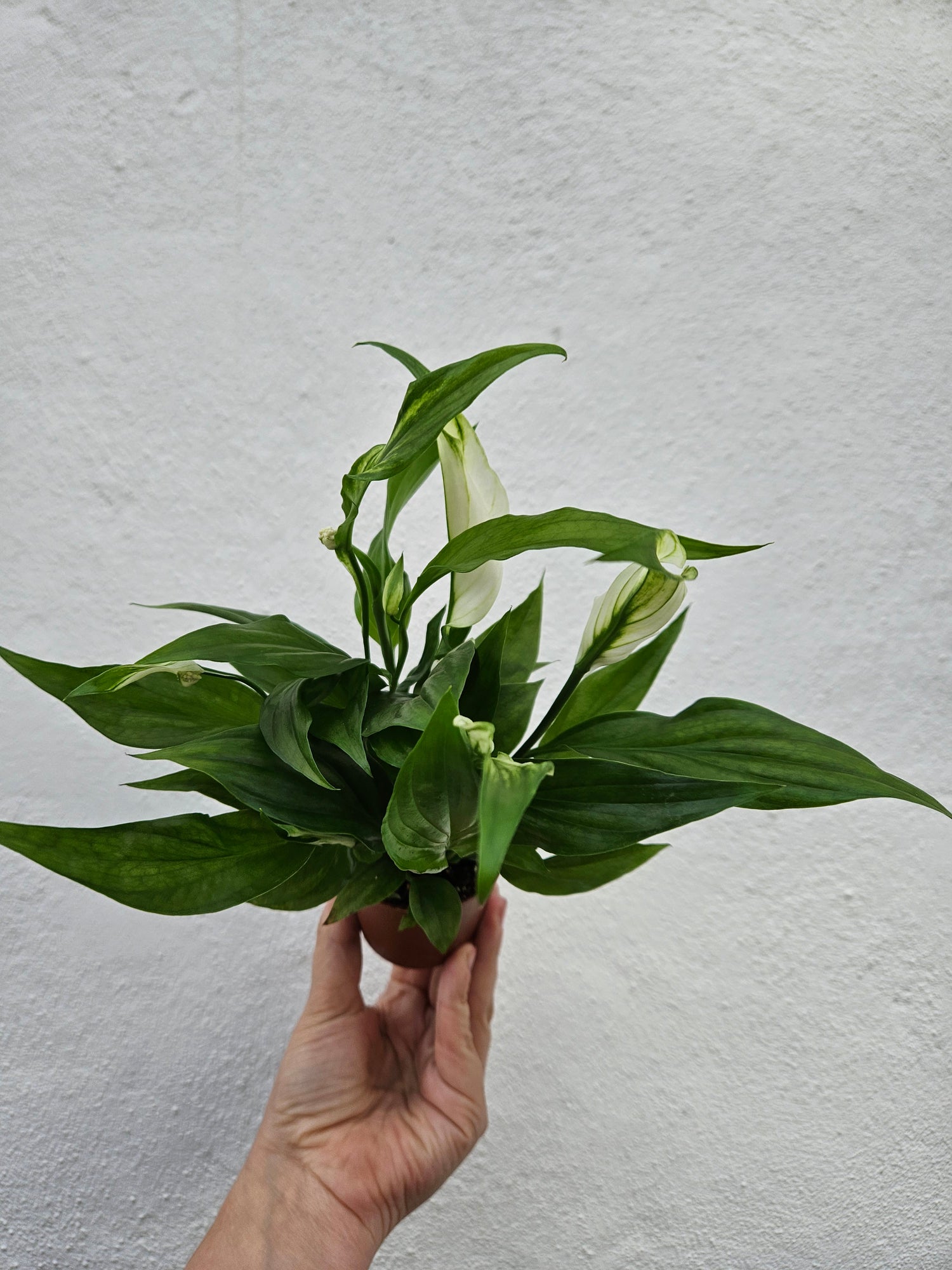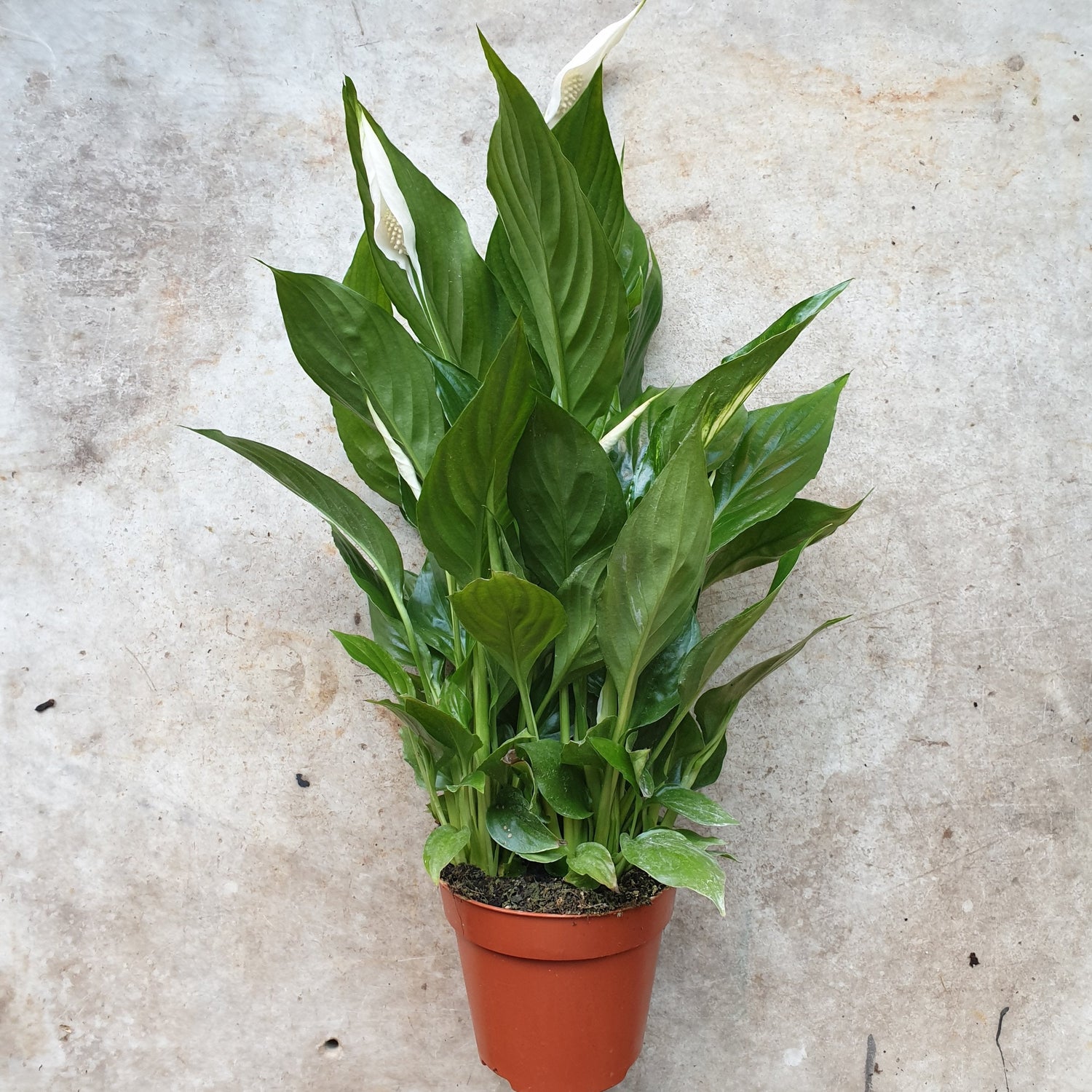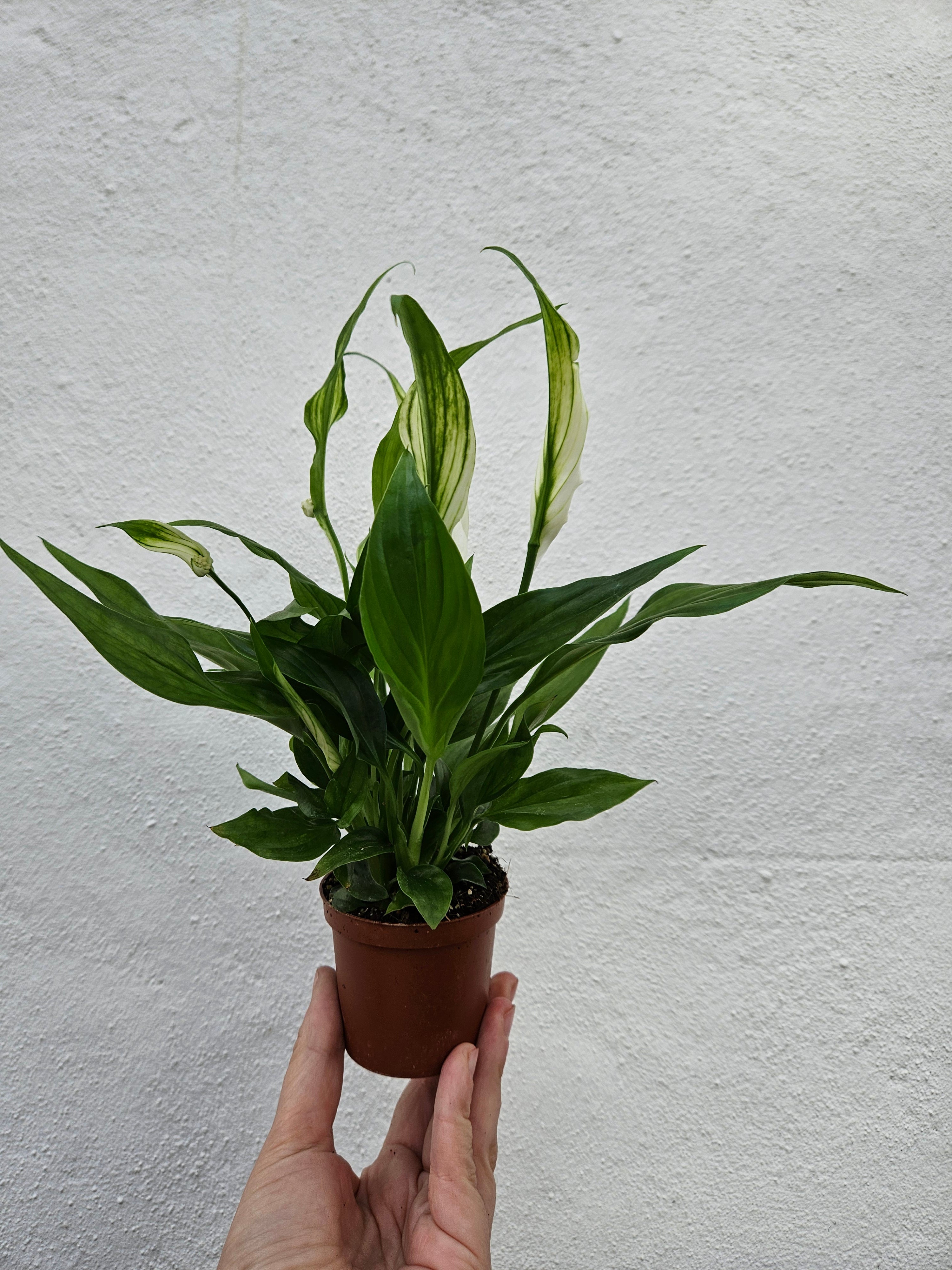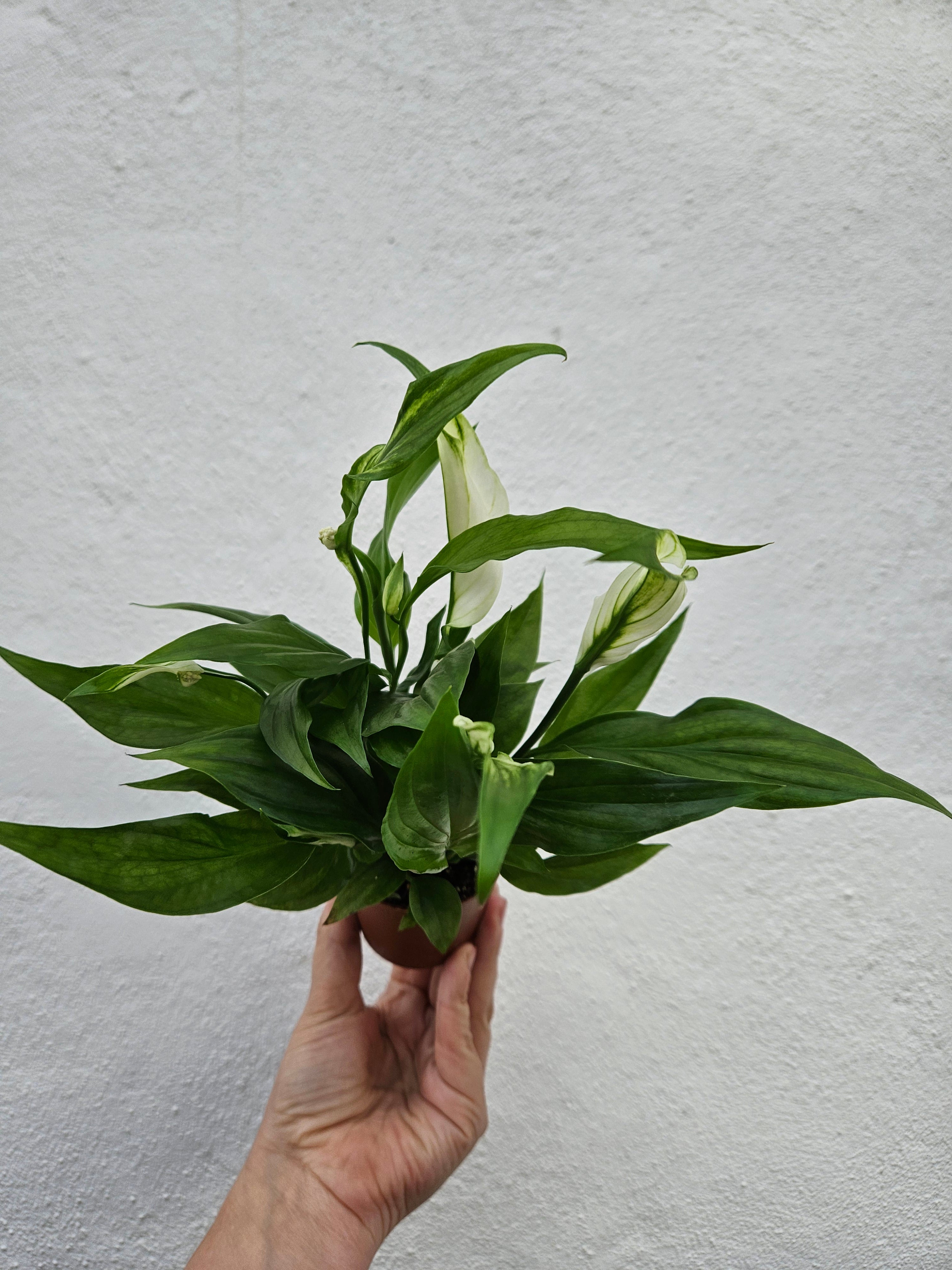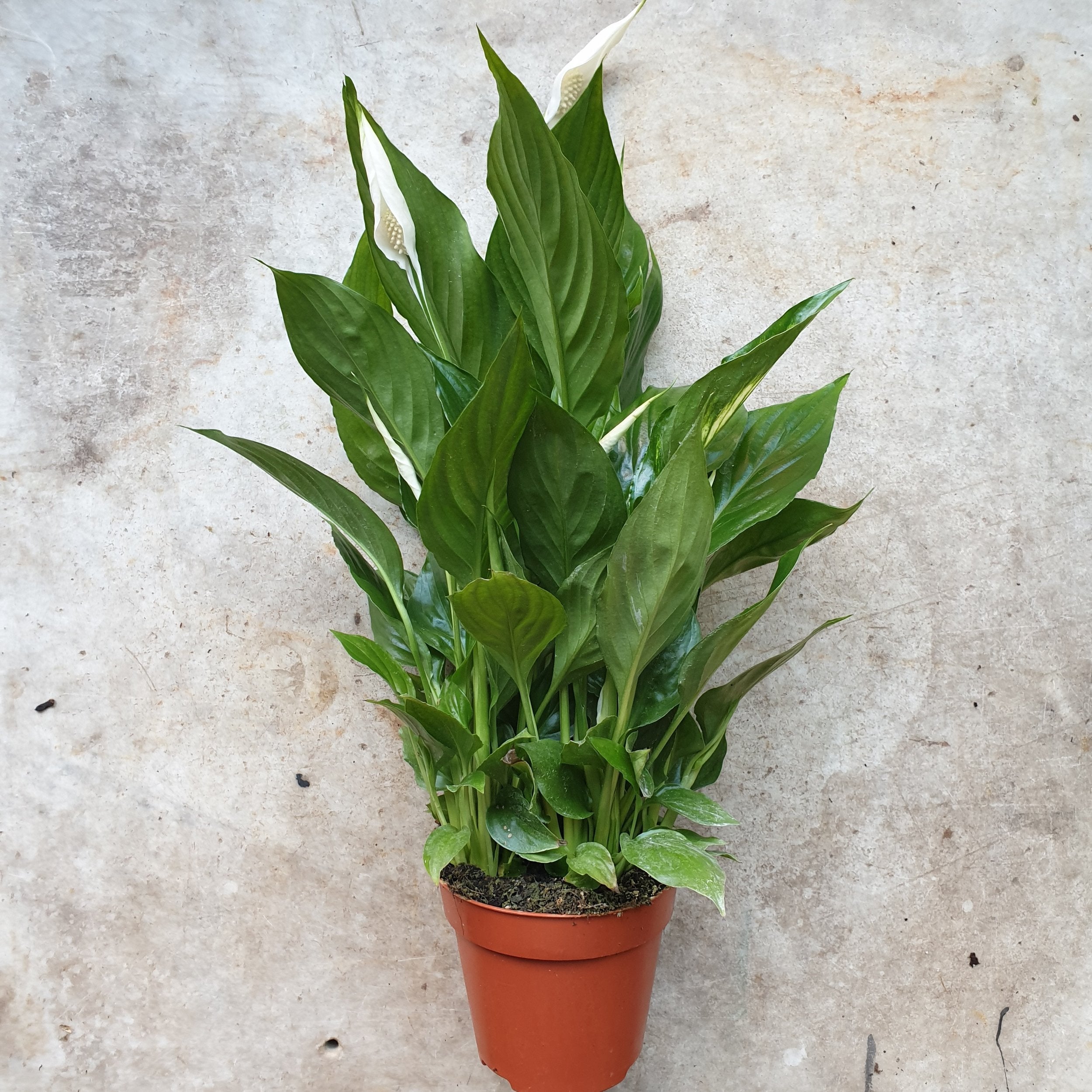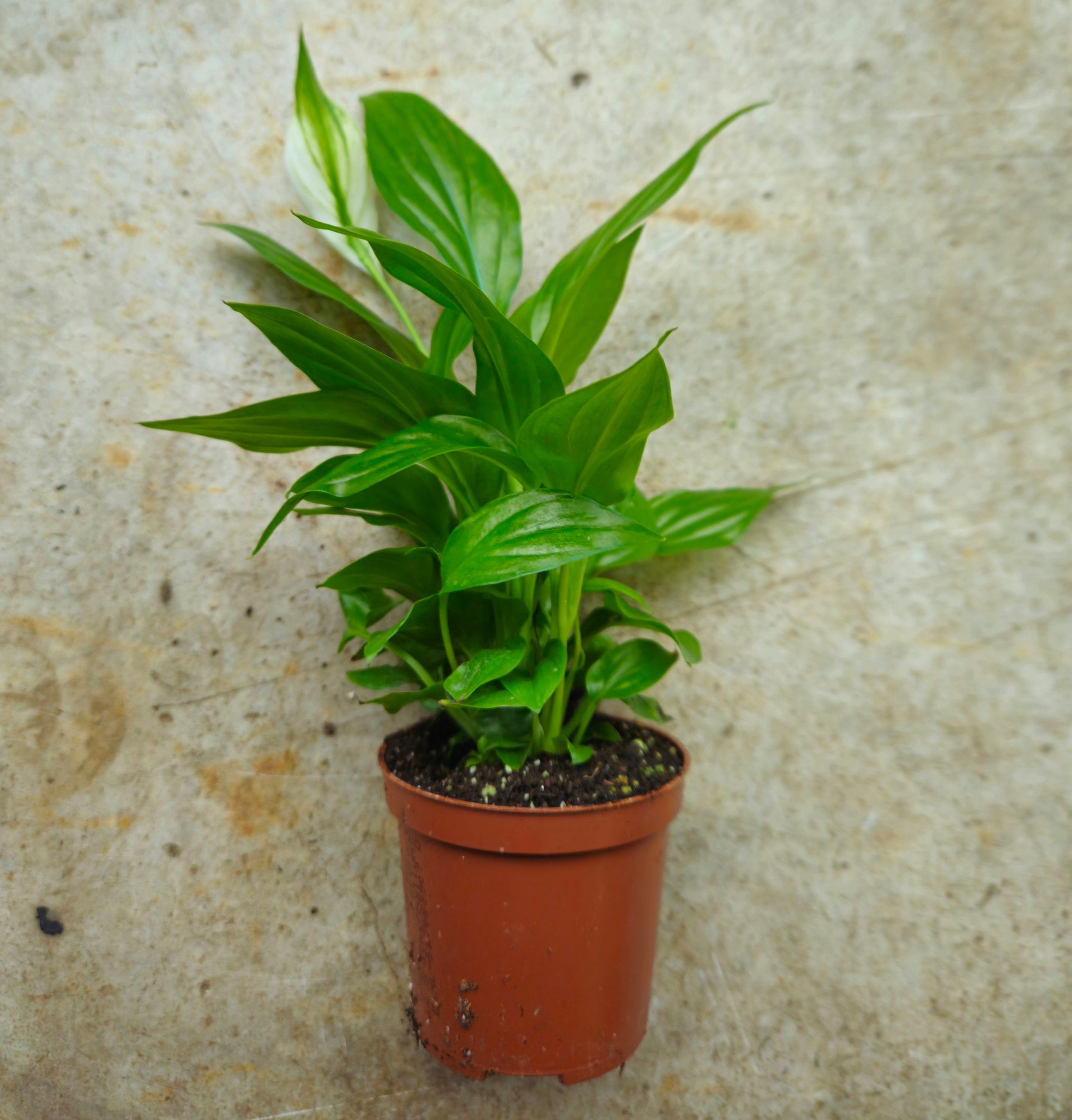Peace Lily Overview:
The Peace lily, Spathiphyllum is a popular choice as an indoor plant. Not only does it have glossy, green leaves, but striking white spathes that resemble flowers. This particular variety of peace lily is a cultivar, the ‘Sensation’ is known for being the largest leaved member of the spathiphyllum family with deep ribs formed in the leaves creating a sculptural quality. The peace lily is also known for air purification by removing VOCs (Volatile Organic Compounds) from the air inside the home.
How to Care for a Peace Lily:
Light Requirements:
Peace lilies prefer bright, indirect light, place your peace lily in a position where it can access filtered sunlight. Keep away from direct sunlight as this will scorch the leaves. While peace lilies can thrive in lower light, their growth and flowering may be affected. If you’re more interested in foliage, this can be a great option for a low-light area.
Watering:
When it comes to the peace lily, they can be rather dramatic when they are thirsty, with all their leaves suddenly drooping. To avoid this happening a regular watering schedule is needed. Water the plant when the top two inches of soil feel dry to the touch.
Humidity:
Peace lilies thrive in high-humidity environments. Mist around the leaves occasionally or place a tray of pebbles with water beneath the plant to increase humidity levels. Be mindful of drafts and avoid placing your peace lily near air-conditioning vents or heaters, as these can cause dryness.
Temperature:
Peace lilies prefer temperatures between 18°C - 27°C. Avoid exposing them to extreme temperature fluctuations or cold drafts.
Fertilization:
Feed your peace lily every 6-8 weeks during the growing season (spring and summer). Follow the instructions on the fertiliser packaging for proper application. We sell an organic pure seaweed extract that when diluted is a great feed for plants including Spathiphyllum.

How to Repot a Peace Lily:
When to Repot:
Peace lilies generally need repotting every 1-2 years, or when their roots become crowded and start circling the base of the pot, or growing out of the drainage holes. Spring is the best time to repot, as the plant is actively growing, try to avoid repotting plants in winter.
Selecting the Right Pot:
Choose a pot that is one or two sizes larger (this refers to the diameter of the plant pot, normally measured in centimetres, the pot size would therefore be around 1-2 cm wider) than the current one, ensuring it has drainage holes at the bottom. This allows excess water to escape, preventing waterlogged soil. You can always place your nursery pot in a decorative pot if you want to retain drainage but hide the plastic.
Repotting Process:
Carefully remove the peace lily from its current pot, gently loosening the root ball. Place it in the new pot and add fresh, well-draining potting mix around the roots. Gently press the soil to ensure the roots are bedded in. Avoid pressing too hard on the soil as this can cause it to compact. Water the plant thoroughly after repotting.
How to Propagate a Peace Lily:
Division Method:
To propagate your peace lily, divide it during repotting. Carefully separate the plant into smaller clumps, ensuring each division has roots and a few leaves. Plant these divisions in separate pots with fresh potting mix. Provide the same care as you would for a mature peace lily.
Water Propagation:
Another method is to propagate peace lilies in water. Select a healthy stem with a few leaves and place it in a water-filled jar. Keep it in a bright location, changing the water regularly. Once roots develop, transfer the cutting to a pot with soil.
Remember, patience is key when propagating peace lilies. It may take some time for new growth to appear.
